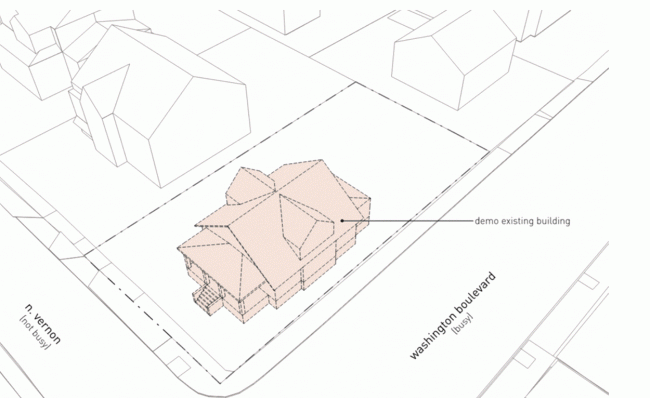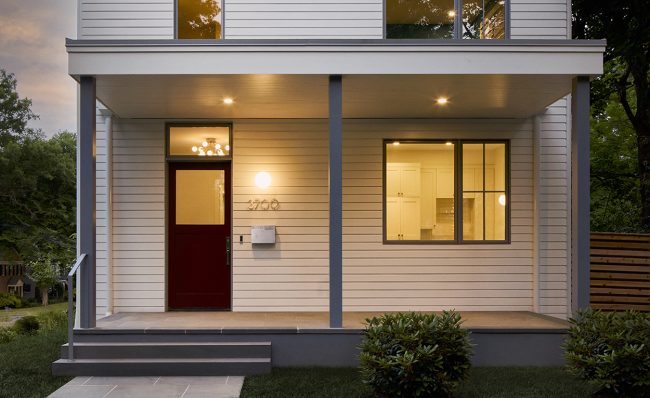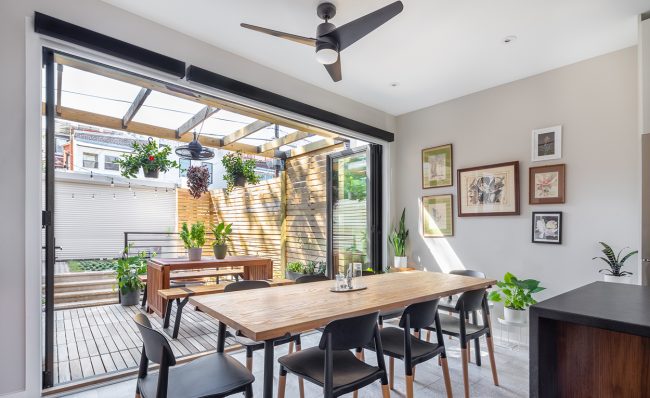Building a Net-Zero Home Makes Sense
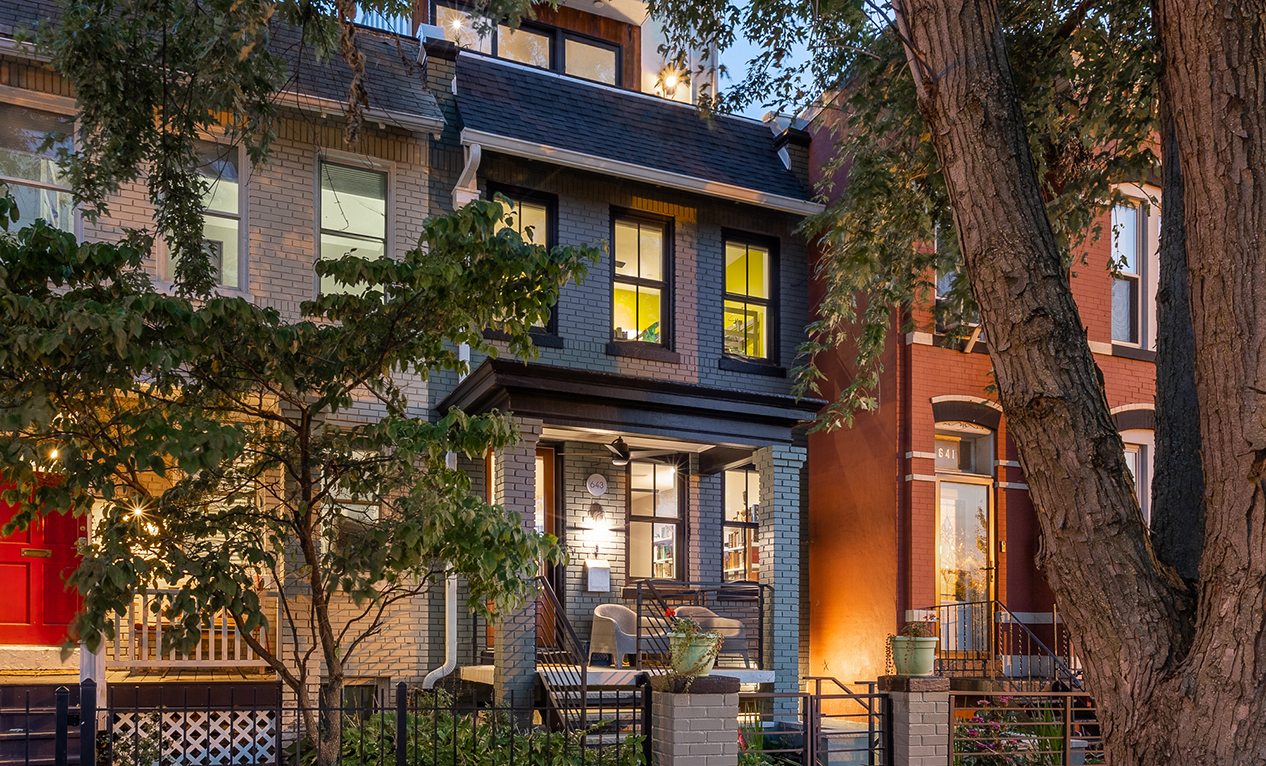
Many of us want to contribute to a more sustainable future, but we aren’t sure how to make a meaningful impact. Building a net-zero home is the best place to start. When we meet with clients to discuss building a custom home or renovating an existing one, their sustainability goals are an important part of the conversation. Pursuing net-zero energy makes sense for myriad reasons, and we encourage clients to consider it. Founding principal Will Teass, with the help of our team, walked the talk in the recent renovation of his own Capitol Hill rowhouse. Over a four-part series, we will explore what goes into creating a net-zero home, as well as some key takeaways from Will’s successful project. Download our guide here.
Why Strive for Net Zero?
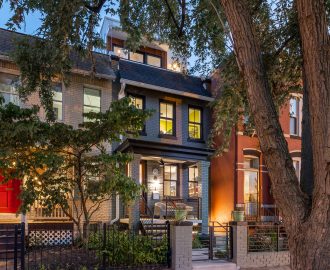 Residential buildings are responsible for 20-25 percent of all the energy we consume in the United States. Their contribution to our collective carbon footprint is undeniable. The Global 2030 Challenge has set the goal that all new buildings and major renovations be carbon-neutral in 2030 (using no fossil fuels to operate). Net zero is a pathway to achieving that goal. A net-zero home, also known as a net-zero-energy (NZE) home, produces at least as much energy as it consumes on an annual basis. Said another way, the total amount of energy used by the building annually is equal to the amount of renewable energy created on the site. To bridge any gap, the option is available to buy renewable energy – such as solar, wind and hydropower – from the existing utility provider. Achieving net-zero energy doesn’t require that you cut your connection to the electric grid. Rather, you power your home with renewable energy (generally from solar panels) to the maximum extent possible. When renewable resources aren’t unavailable, electricity from the grid supplies your needs. Any excess electricity you produce is fed back into the grid to help power other buildings around you. The local utility installs a special meter that measures the electricity that powers your home, as well as the electricity that goes back into the grid. NZE homes are built, then, around electricity, from heating and cooling to cooking and hot water. Removing your dependence on natural gas, by either selecting electric equipment or phasing out gas-fired appliances during renovation, is an important step in the process.
Residential buildings are responsible for 20-25 percent of all the energy we consume in the United States. Their contribution to our collective carbon footprint is undeniable. The Global 2030 Challenge has set the goal that all new buildings and major renovations be carbon-neutral in 2030 (using no fossil fuels to operate). Net zero is a pathway to achieving that goal. A net-zero home, also known as a net-zero-energy (NZE) home, produces at least as much energy as it consumes on an annual basis. Said another way, the total amount of energy used by the building annually is equal to the amount of renewable energy created on the site. To bridge any gap, the option is available to buy renewable energy – such as solar, wind and hydropower – from the existing utility provider. Achieving net-zero energy doesn’t require that you cut your connection to the electric grid. Rather, you power your home with renewable energy (generally from solar panels) to the maximum extent possible. When renewable resources aren’t unavailable, electricity from the grid supplies your needs. Any excess electricity you produce is fed back into the grid to help power other buildings around you. The local utility installs a special meter that measures the electricity that powers your home, as well as the electricity that goes back into the grid. NZE homes are built, then, around electricity, from heating and cooling to cooking and hot water. Removing your dependence on natural gas, by either selecting electric equipment or phasing out gas-fired appliances during renovation, is an important step in the process.
Other Advantages of Building a Net-Zero Home
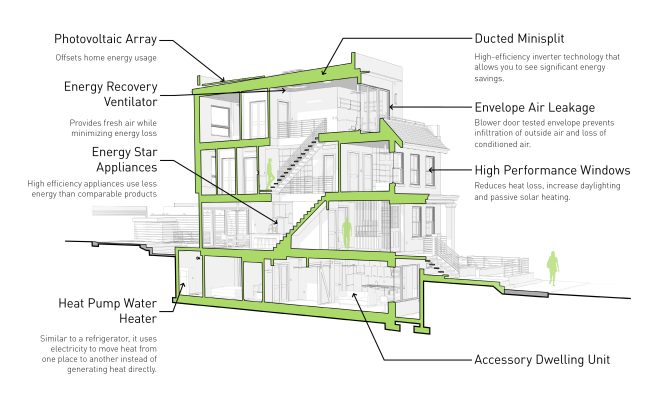 Sustainability aside, not having to pay an energy bill (or paying a nominal one) is a huge advantage. At his renovated rowhouse, for example, Will received a $3 electric bill one month last summer. The upfront costs (more on that topic in a future post) are offset over time. The initial investment is worth the return of having an energy-independent home, especially given rising costs and the instability of the energy market. Almost any home can be designed or adapted to a net-zero standard. Pursuing the standard doesn’t prescribe a certain architectural style. It also doesn’t detract from the home’s aesthetic look and approachability. Or livability, for that matter. Because energy consumption is offset, there’s no need to sacrifice thermal comfort. By not relying on gas for heating, cooling and cooking, a net-zero house enjoys better indoor air-quality too. In short, both the environment and the homeowners benefit from a net-zero approach. Part 2 of our series will discuss successful design strategies for achieving net-zero energy consumption. We’ll also delve into the specifics of how Will met his sustainability goals while renovating his Capitol Hill rowhouse.
Sustainability aside, not having to pay an energy bill (or paying a nominal one) is a huge advantage. At his renovated rowhouse, for example, Will received a $3 electric bill one month last summer. The upfront costs (more on that topic in a future post) are offset over time. The initial investment is worth the return of having an energy-independent home, especially given rising costs and the instability of the energy market. Almost any home can be designed or adapted to a net-zero standard. Pursuing the standard doesn’t prescribe a certain architectural style. It also doesn’t detract from the home’s aesthetic look and approachability. Or livability, for that matter. Because energy consumption is offset, there’s no need to sacrifice thermal comfort. By not relying on gas for heating, cooling and cooking, a net-zero house enjoys better indoor air-quality too. In short, both the environment and the homeowners benefit from a net-zero approach. Part 2 of our series will discuss successful design strategies for achieving net-zero energy consumption. We’ll also delve into the specifics of how Will met his sustainability goals while renovating his Capitol Hill rowhouse.

